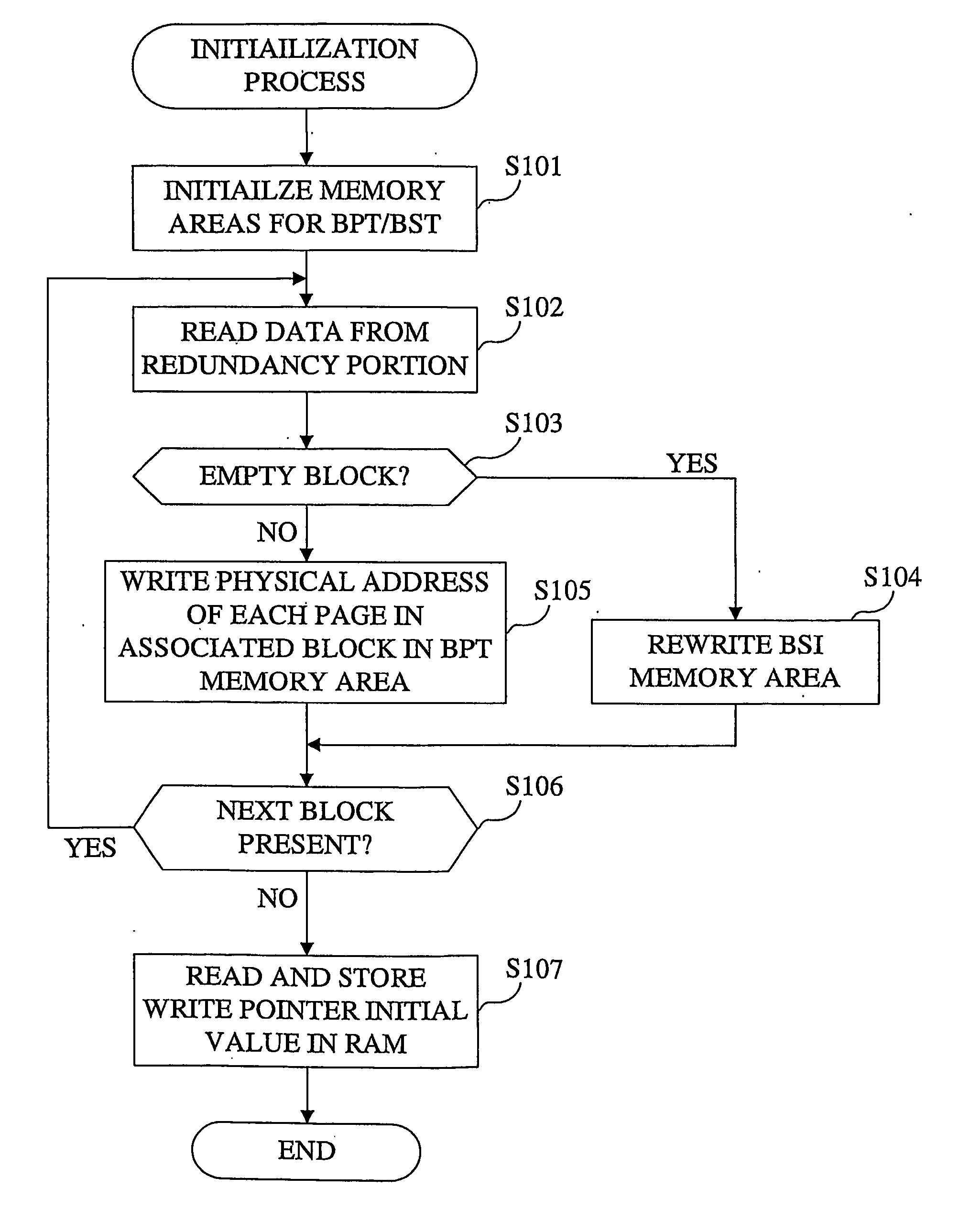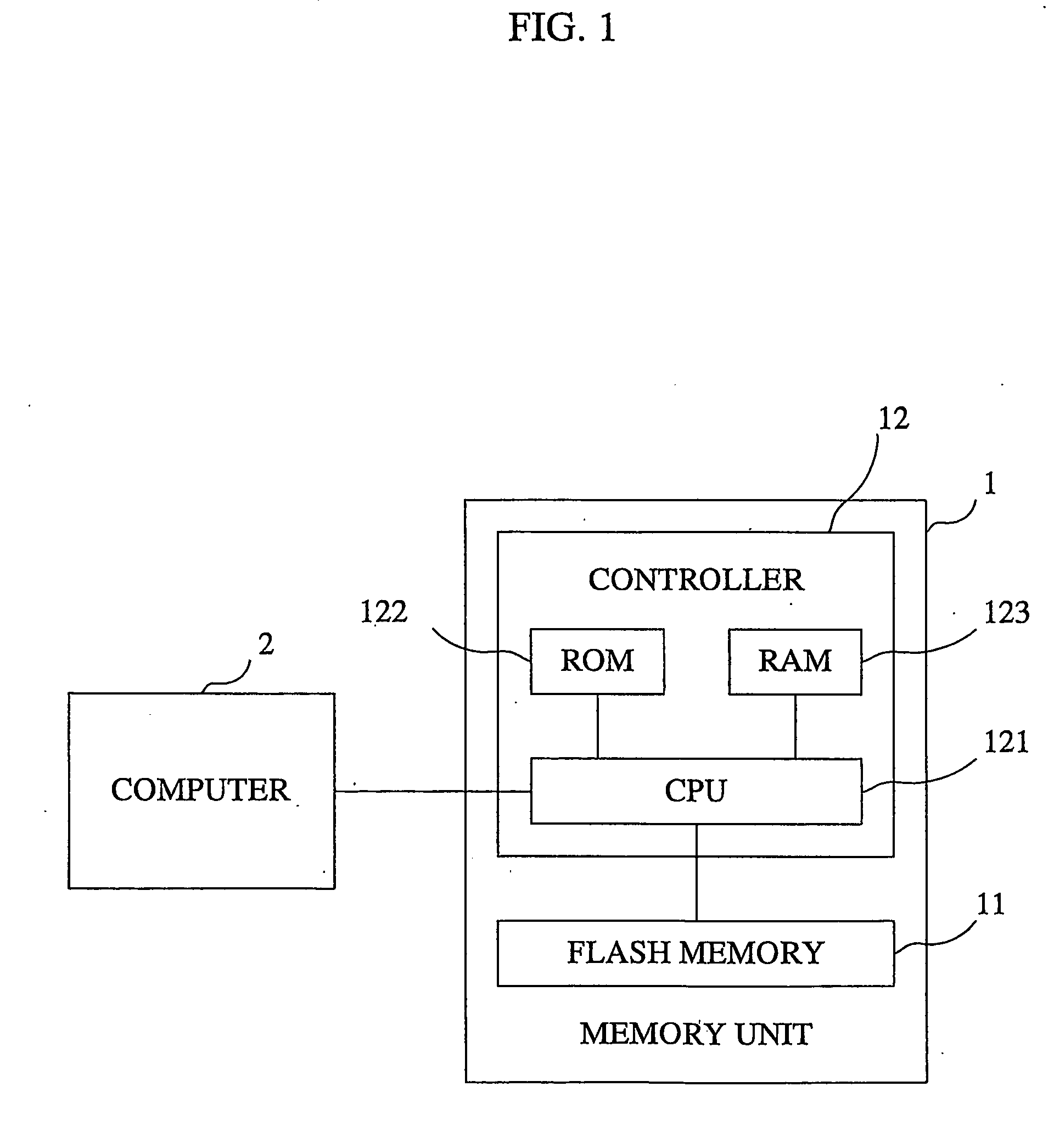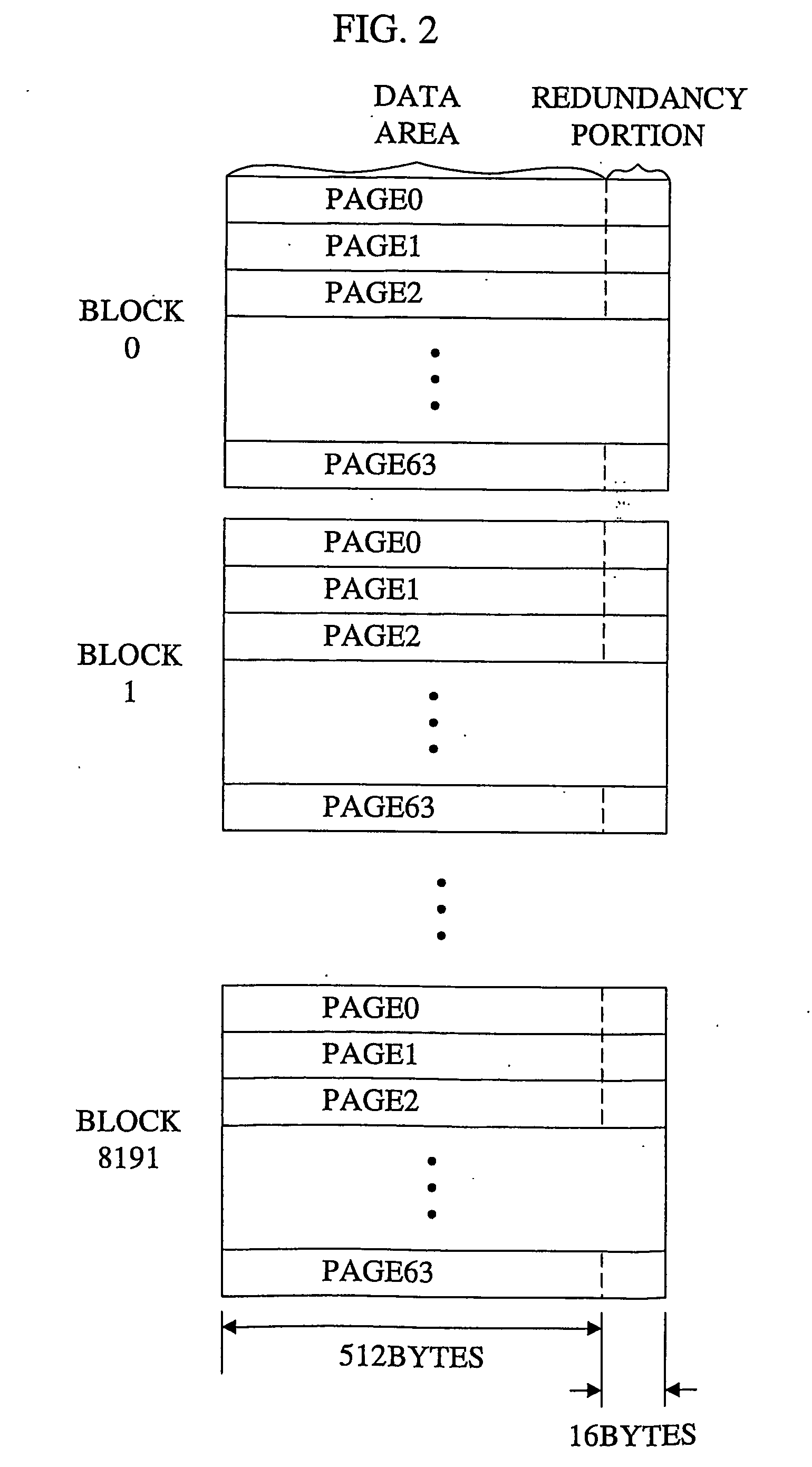Memory device, memory managing method and program
a memory management and memory device technology, applied in the direction of memory adressing/allocation/relocation, instruments, input/output to record carriers, etc., can solve the problems of inefficient frequent flash erase, inability to perform proper data reading and writing, and inability to carry out proper data storage at the manufacturing stage. , to achieve the effect of wasting flash eras
- Summary
- Abstract
- Description
- Claims
- Application Information
AI Technical Summary
Benefits of technology
Problems solved by technology
Method used
Image
Examples
Embodiment Construction
[0092] One embodiment of the invention will be described below, taking a memory system equipped with a flash memory as an example, with reference to the accompanying drawings.
[0093]FIG. 1 is a block diagram illustrating the physical structure of the memory system according to the embodiment of the invention.
[0094] As illustrated, the memory system comprises a memory unit 1 and a computer 2. The memory unit 1 is attached in a detachable manner to the computer 2 via a slot provided in the computer 2.
[0095] The slot of the computer 2 comprises, for example, a PCMCIA slot for relaying a PCMCIA bus.
[0096] The memory unit 1 comprises a flash memory 11 and a controller 12.
[0097] The flash memory 11 is comprised of a memory device, such as EEPROM (Electrically Erasable / Programmable Read Only Memory).
[0098] In response to an access made by the controller 12, the flash memory 11 stores data supplied from the computer 2, supplies stored data to the computer 2 and erases stored data.
[009...
PUM
 Login to View More
Login to View More Abstract
Description
Claims
Application Information
 Login to View More
Login to View More - R&D
- Intellectual Property
- Life Sciences
- Materials
- Tech Scout
- Unparalleled Data Quality
- Higher Quality Content
- 60% Fewer Hallucinations
Browse by: Latest US Patents, China's latest patents, Technical Efficacy Thesaurus, Application Domain, Technology Topic, Popular Technical Reports.
© 2025 PatSnap. All rights reserved.Legal|Privacy policy|Modern Slavery Act Transparency Statement|Sitemap|About US| Contact US: help@patsnap.com



